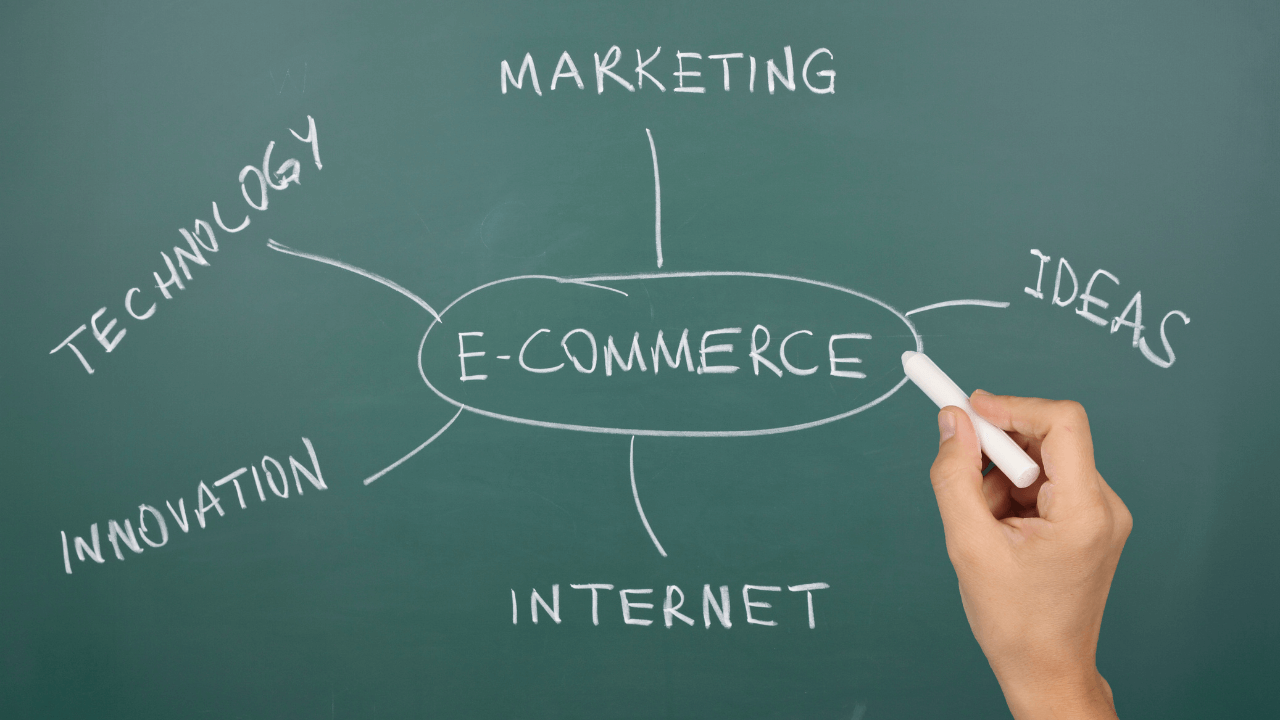Language:
How to Start an E-Commerce Business with No Money: Beginner’s Guide

Be honest — did you laugh a little when you saw the title of this blog ? Maybe clicked just to see what kind of wild claims we’re making? “Start an e-commerce business with NO money? Sure, and maybe I’ll pick up a summer home on Mars while I’m at it” 🤭
We know exactly what you’re thinking: “How is this even remotely possible?”
You’re probably waiting for us to follow up with, “Just kidding!” But nope, we’re 100% serious.
Yes, it does sound a little far-fetched. But it’s NOT. You can start an e-commerce business with no money.
And, believe it or not, you can actually make it profitable!!
Crazy, right?
Keep reading, and we’ll walk you through exactly how to make it happen (and don’t worry, it doesn’t involve selling your soul or living off ramen forever).
Now, if you’re the type who likes shortcuts, you can always chat with our formation experts. They’ll spill the beans in a free consultation (see? Starting for free is already on the table, literally).
1. Find a Niche Market (Your Playground, Your Zone)
You can’t just announce, “I’m starting an e-commerce business!” one day without knowing what you’re actually selling. That’s like deciding to be a chef without figuring out what cuisine you want to cook.
So, what should be your first step? Well, you need to FIND your niche.
But don’t rush through this step like you’re speed-running a video game. You need to love this niche because it’s going to be your thing for a long time.
And you don’t want to be stuck selling stuff you secretly despise.
Let us remind you one more thing: there’s no magic formula for finding your niche, but here are some pro tips to help you nail down an area of business you can stay passionate about (and not regret in six months):
✅ Spot a problem people actually care about. Think about stuff that bugs you or others. Are you into cruelty-free beauty but frustrated at how expensive it can be? Boom — potential niche right there. Affordable, ethical cosmetics, anyone?
✅ Look at what worked before. Take Dollar Shave Club, for example. They didn’t try to reinvent the razor wheel or compete with the big brands by overcomplicating things. Instead, they saw a gap in the market: razors were overpriced and overly fancy.
So, they swooped in with a simple solution — affordable, no-frills razors delivered to your door, with a side of humor. Their marketing was funny and relatable, and boom, they nailed it by giving people exactly what they didn’t know they needed. So the lesson here is to not overcomplicate things while finding your niche.
✅ Steer clear of overstuffed markets. Do we really need another generic yoga pant seller? Probably not. But if you can throw in something different — say, eco-friendly materials or loyalty points for every purchase. Well, that can work out pretty well. Think about it.
2. Use the Power of Dropshipping (a.k.a. Inventory-Free Life)
So, you don’t have the funds to stock up on products? That’s completely okay! You’re not the first person to feel that way, and you won’t be the last. That’s where dropshipping comes in. It’s basically running an online store without ever having to touch a product.
Okay, wait, don’t kill your nerve cells thinking too deep. We’ll break it down for you.
With dropshipping, you set up your online shop, choose products from a supplier (like AliExpress or Oberlo), and list them for sale. But here’s the best part: when someone buys from your store, you don’t have to touch a single box.
You simply forward the order to the supplier, and they take care of everything — packing, shipping, and delivering the product straight to your customer. You’re essentially the middleman (or woman) between the supplier and the customer, but you never have to deal with boxes, shipping labels, or stock management.
Sound better already?
So, why is dropshipping so popular these days? Because you don’t need to buy a bunch of inventory upfront, which means less financial risk. You only pay the supplier when you make a sale, so you’re not stuck with unsold stock.
It’s perfect for entrepreneurs who want to jump into e-commerce but don’t have the cash for inventory or space to store it.
Think about Shopify. Plenty of entrepreneurs built stores without touching a single product. And Gymshark started with dropshipping! Now, they’re a multi-million-dollar company.
So, if you’re still thinking, “Can I really Start E-commerce Business with No Money?”
The answer is yes. Will it take work? Also yes.
In a nutshell: You sell. The supplier ships. Everybody wins. PERIOD!
You are going to love this: The Lifestyle of a Successful Entrepreneur
3. Leverage Free Tools (Your DIY Arsenal)
There are plenty of free startup tools that can help you get your business rolling without burning a hole in your wallet.
Let’s break down how you can use them to make your life a bit easier (because we know this whole “starting a business” thing can feel overwhelming).
✅ Free website builders
Let’s say you’re trying to launch your online store, but you’re staring at a blank screen thinking, “I don’t even know where to start.” That’s where WordPress or Wix come in.
You can easily set up a website, even if you’ve never touched a line of code in your life. Choose a template, plug in your info, and viola, your website is live.
Sure, it’s basic, but when you’re just starting out, you don’t need all the extras and mind boggling features, right? You just need something that works, and that doesn’t drain your bank account.
✅ Free e-commerce platforms
Now, you’ve got your website, but what about selling? You don’t want to deal with complicated payment systems or shipping setups. And that’s why you need to rely on Shopify’s free trial or WooCommerce (which is free with WordPress).
They make it easy to add products, set up payment gateways, and track orders. And again, if you’re sitting there thinking, “Can I really do this on my own?” Yes, you can.
These platforms are designed to be user-friendly, so you won’t be pulling your hair out trying to figure them out.
✅ Free design tools
Hiring a full-time designer is expensive, and most of us are not exactly Photoshop experts. That’s where Canva saves the day. Need a logo that doesn’t look like it was made in Microsoft Paint? Canva’s got your back.
Need product photos that actually look professional? Canva again. You can whip up everything from logos to Instagram posts without paying a cent or spending hours learning complicated design software.
✅ Free marketing and social media management tools
You know you should be marketing your business, but where do you even begin? Mailchimp’s free plan lets you build an email list and send newsletters to your customers. It’s super simple to use, so you don’t need to be a marketing whiz.
And for social media? We all know the pressure to be active on Instagram, TikTok, Pinterest, and every other platform out there.
But managing all those accounts can feel like a mess. That’s where HubSpot’s social media management tools come in. Schedule posts, track your performance, and stay organized without drowning in the chaos of multiple logins, multiple screens and notifications.
4. Sell What You Know (Your Brain is Free)
Got a skill? You can turn that into an e-commerce business. Surprised a bit?
Well, selling your expertise is a quick way to get started with No Capital.
You just need to sell what’s already in your head. People don’t hesitate paying for stuff they don’t know how to do, and that’s where YOU, YOUR SKILLS and YOUR BRAIN come in. Think of it as monetizing your brainpower.
Here’s a relatable example to make this crystal clear:
Let’s say you’re an expert at graphic design. Instead of just doing client work (which can take forever), why not sell premade design templates?
You can just create them once and sell them over and over. Or take it a step further and offer a course teaching others how to design. You’re basically turning your expertise into a product. Simple as that!
Or maybe your sourdough bread has reached legendary status. (Yes, people are still obsessed with sourdough — a pandemic hobby turned lifestyle, apparently.) So, why not sell a recipe eBook or a guide to mastering that perfect loaf? It’s something you already know, and trust us, people love learning new recipes, especially if it’s a popular item on everyone’s dinner table.
Now, before you go thinking, “But my skills aren’t that fancy,” stop right there. People are selling knitting patterns, photography presets, or even how-to guides for the most niche hobbies imaginable. And, people are buying them left and right.
The point is, you’re not dealing with physical products here — no boxes to ship, no inventory piling up in your living room.
Just your knowledge, packaged in a way that helps someone else, and you get paid for it! All it takes is sharing what you’re already great at. It doesn’t get much easier than this, right?
5. Social Media is Your New Best Friend (and It’s Free)
If you’re serious about launching your Zero-Cost E-commerce Startup, then social media needs to be part of your plan. The good news? It doesn’t cost anything.
And no, you don’t need to become a social media influencer overnight, but you do need to use these platforms wisely.
Here’s how to start:
Use platforms like Instagram, Pinterest, and TikTok to grow your brand’s visibility. The trick is consistency and engagement.
Post regularly, respond to your followers, and show that there’s a real person behind your brand. It’s all about creating a connection.
Take Glossier, for example. They didn’t just throw out a product and hope it would sell. They started as a blog, using Instagram to gather feedback from their community before even launching their first item.
By the time they had something to sell, they already had an audience. Today, they’re a major player in the beauty industry, and they built that foundation through social media engagement.
The more consistently you post and interact, the more you’ll grow your following. Yes, it will take some time and effort, but you don’t need to spend a fortune to get people interested in what you’re doing.
6. Free Content Marketing (Give Value First)
Simply posting on social media won’t be enough to build a lasting connection with your audience.You need to step up your game with content marketing.
You’ve got to give your audience something valuable, something they actually care about. And content marketing allows you to do just that.
Here’s how you can get started with content marketing for free:
👉 Blogging

Blogging remains one of the best ways to attract traffic to your store. It helps you share insights that matter to your target audience and showcases your expertise.
Let’s say you’re selling eco-friendly clothing. Instead of just promoting your products, write about why sustainable fashion is important, how it benefits the environment, or how consumers can make better choices in their everyday lives.
Blogging not only helps educate your readers but also improves your site’s SEO, making it easier for potential customers to find you.
Consider Pat Flynn, a well-known online business expert. He started by offering free advice and tutorials on his blog, never focusing on selling from the start.
Over time, his audience grew, and his blog turned into a six-figure business because people trusted him and valued the free knowledge he shared.
The takeaway? Providing value first lays the foundation for long-term success.
👉 YouTube tutorials
Video content is powerful, and YouTube provides a free platform for sharing your knowledge. If your business involves anything that can be taught or demonstrated, create tutorials to engage your audience.
For instance, if you sell skincare products, you could make videos explaining how to use each product effectively or offer skincare tips.
By positioning yourself as an expert in your niche, you build credibility and naturally direct viewers to your store.
The Bottomline?
Content marketing shows your audience that you’re not just here to sell; you’re here to offer value.
Through blogs, videos, and other content, you position yourself as a trusted resource in your field, which ultimately leads to customer loyalty and business growth.
Plus, with free tools like blogging platforms and YouTube, you can get started without any upfront costs.
7. Pre-Sell Products (AKA “Sell Before You Build”)
What if we told you there’s a way to get your customers to fund your first batch of products?
Sounds crazy, right?
But you know what? It’s been done successfully many times, and here’s how you can do it, too.
That’s what pre-selling is all about. It’s a clever way to generate cash flow before you even need to spend a dime on inventory.
Instead of buying inventory upfront and crossing your fingers it sells, you create a landing page or online store for a product that isn’t available yet.
You put up product details, show some mock-ups, and start taking pre-orders. When customers buy based on the mock-ups, you use that money to fund production, then ship the product once it’s ready.
You don’t have to spend a single cent upfront.
But why would someone trust you enough to pre-order something that doesn’t exist yet?
Not exaggerating, but even in this competitive world, it all boils down to trust and transparency.
Here’s how you build that trust:
✅ Be upfront: Let customers know it’s a pre-sale. Don’t try to hide it or pretend the product’s sitting in a warehouse. People appreciate honesty — tell them the product is in development, and you’ll use their pre-orders to get it made.
✅ Give them clear timelines: Explain when production will start and when they can realistically expect to receive the product. If you’re upfront about the timeline and any potential delays, customers will feel more comfortable knowing what to expect.
✅ Show them your vision: Use prototypes, mock-ups, or videos to make the product feel real. The more visual and tangible you make it, the more people will trust that this is a product worth waiting for.
✅ Leverage social proof: If you have past happy customers, testimonials, or any kind of positive feedback, showcase that. People trust the opinions of others, and seeing that others believe in you can encourage new buyers to take the leap.
Kickstarter and Indiegogo have helped entrepreneurs raise millions before their products even existed.
Take Pebble Watch, for instance. They raised over $10 million by pre-selling their smartwatches before the first one was even produced.
People trusted the creators because they were transparent about the process and had a clear vision.
In short, honesty builds trust, and trust leads to sales.
So, how do you begin this journey?
💡 First, create a compelling landing page: Make sure the product details are clear and that people know exactly what they’re pre-ordering. Use strong visuals, mock-ups, or prototypes to give them a sense of what’s coming.
💡 Be completely transparent: Make it obvious it’s a pre-sale and explain the timeline. Give them confidence that you’ll deliver, even if there are production delays.
💡 Don’t leave any stone unturned. Market like a pro: Use your social media platforms, email list, and networks to generate buzz. The more excited people get, the more likely they are to pre-order.
8. Affiliate Marketing (Sell Without Owning Anything)
If the idea of running your own store feels like too much too soon, start with affiliate marketing. This way, you don’t even need to worry about selling your own products.
Instead, you recommend products from other companies and earn a commission every time someone buys through your link.
Here’s how it works:
✅ Sign up for affiliate programs (Amazon Associates, ShareASale, etc.).
✅ Promote the products through your blog, social media, or email list.
✅ Earn money for every sale made through your referral links.
Bloggers like Michelle Schroeder-Gardner from “Making Sense of Cents” make six figures a month just by recommending products they don’t even own!
9. Keep Hustling (Because You Can’t Quit)
Let’s not sugarcoat this — this journey is going to take hustle, late nights, and probably way too much caffeine. And you didn’t come this far to just stop when it gets tough, right?
If you’re starting your e-commerce journey with no capital, you’re going to have to be scrappy. But scrappy can be good! It means you’re resourceful, adaptable, and ready to make things happen.
Here’s the mindset to have:
Remember, persistence is everything. We’re not going to lie — things aren’t always going to go according to plan. In fact, they’ll rarely go as planned. And that’s okay! But that’s where your grit has to show up.
If something doesn’t work, don’t see it as a dead end. Try a different angle, adjust your strategy, or pick up a new skill. Every time something goes wrong, you’re just getting one step closer to figuring out what actually works.
And yeah, the hustle is real. There will be days when it feels like you’re putting in all this effort and getting nowhere. But here’s the thing — every little step, every experiment, every long night, it’s all progress. Even when it doesn’t feel like it, you’re moving forward.
Just remember to stay flexible.
When something flops, it’s not a failure — it’s feedback. Take it all with a positive attitude. We know it’s hard, but you have no choice. You’ve come too far to quit now.
So be a perennial learner and learn..learn from everything..what worked and what didn’t and that’s what’s going to help you fine-tune your entrepreneurial path.
How doola can help?

Starting a business, especially with no money, is not for the faint of heart. It’s full of twists, turns, and those “what now?” moments.
Every entrepreneur has been where you are — feeling overwhelmed and wondering how to make it all work. But you don’t have to go through this alone, and there’s absolutely no harm in asking for help.
That’s why we’re here. doola is here.
At doola, we’re here to make this process smoother for you. We help you set up your e-commerce business without dragging you through a mountain of paperwork or legal headaches.
Our formation process is quite simple, streamlined, and trusted by entrepreneurs worldwide.
Yes, the backend stuff we handle can get complicated, but that’s the point — you don’t have to worry about it. We’ve got it covered.
If you’re feeling ready to take that next step, we’re just a call away. And if you’re still figuring things out — whether it’s legal stuff, getting your business off the ground, or anything else — book a free consultation with us.
You’ve already come this far, and we’re here to help you go even further.



